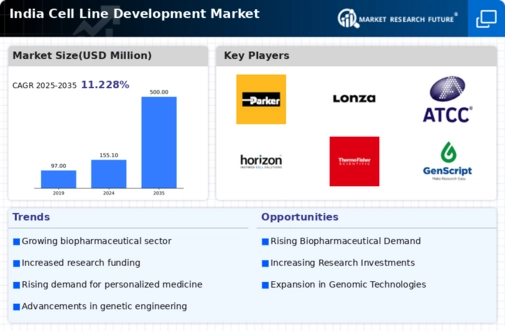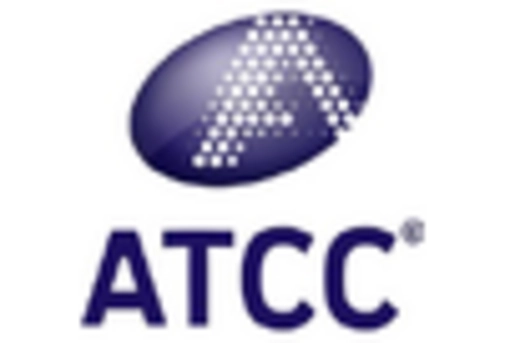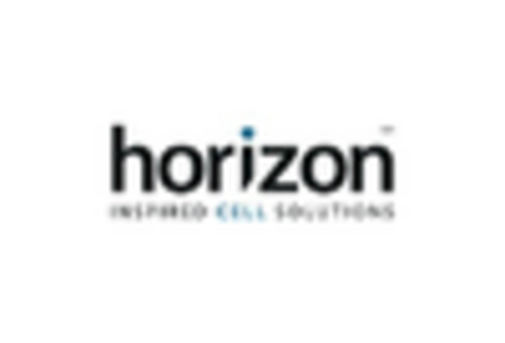Expansion of Biotechnology Research
The expansion of biotechnology research in India is a pivotal driver for the cell line-development market. With an increasing number of research institutions and universities focusing on biotechnological innovations, there is a heightened demand for specialized cell lines. This trend is further bolstered by government initiatives aimed at promoting biotechnology as a key sector for economic growth. The Indian biotechnology sector is expected to reach a valuation of $100 billion by 2025, indicating a robust environment for research and development. As researchers require diverse cell lines for various applications, the cell line-development market is likely to see substantial growth, catering to the needs of both academic and industrial research.
Rising Demand for Personalized Medicine
The cell line development market in India is experiencing a notable surge due to the increasing demand for personalized medicine. As healthcare shifts towards tailored therapies, the need for specific cell lines that can mimic patient responses becomes critical. This trend is supported by the growing prevalence of chronic diseases, which necessitates the development of customized treatment plans. According to recent estimates, the market for personalized medicine is projected to grow at a CAGR of approximately 10% over the next five years. This growth is likely to drive investments in cell line development, as pharmaceutical companies seek to create more effective and targeted therapies. Consequently, the cell line-development market is positioned to benefit significantly from this shift towards personalized healthcare solutions.
Growing Investment in Regenerative Medicine
Investment in regenerative medicine is emerging as a significant driver for the cell line-development market in India. As the field of regenerative medicine evolves, the demand for specific cell lines that can support research and therapeutic applications is increasing. This sector is projected to grow at a CAGR of around 15% over the next few years, reflecting the rising interest from both public and private sectors. Companies are increasingly focusing on developing cell lines that can be used in cell therapy and tissue engineering, which are crucial for advancing regenerative medicine. The cell line-development market is thus likely to benefit from this influx of investment, as it aligns with the broader goals of improving healthcare outcomes through innovative therapies.
Emergence of Advanced Cell Culture Techniques
The emergence of advanced cell culture techniques is reshaping the landscape of the cell line-development market in India. Innovations such as 3D cell culture and organ-on-a-chip technologies are gaining traction, offering more physiologically relevant models for research. These advancements are likely to enhance the efficacy of drug testing and development processes, making them more reliable. As researchers and companies adopt these cutting-edge techniques, the demand for specialized cell lines that can be utilized in these systems is expected to rise. This shift towards more sophisticated methodologies could potentially lead to a transformation in the cell line-development market, as it aligns with the broader trends of improving research accuracy and therapeutic outcomes.
Increased Focus on Drug Discovery and Development
The cell line development market is significantly influenced by the increased focus on drug discovery and development in India. Pharmaceutical companies are investing heavily in research to discover new drugs, which necessitates the use of various cell lines for screening and testing. The Indian pharmaceutical market is expected to reach $55 billion by 2025, with a substantial portion allocated to research and development activities. This trend indicates a growing reliance on cell line models to facilitate the drug development process, thereby driving demand within the cell line-development market. As companies strive to enhance their drug pipelines, the need for high-quality cell lines becomes paramount, further propelling market growth.






















Leave a Comment